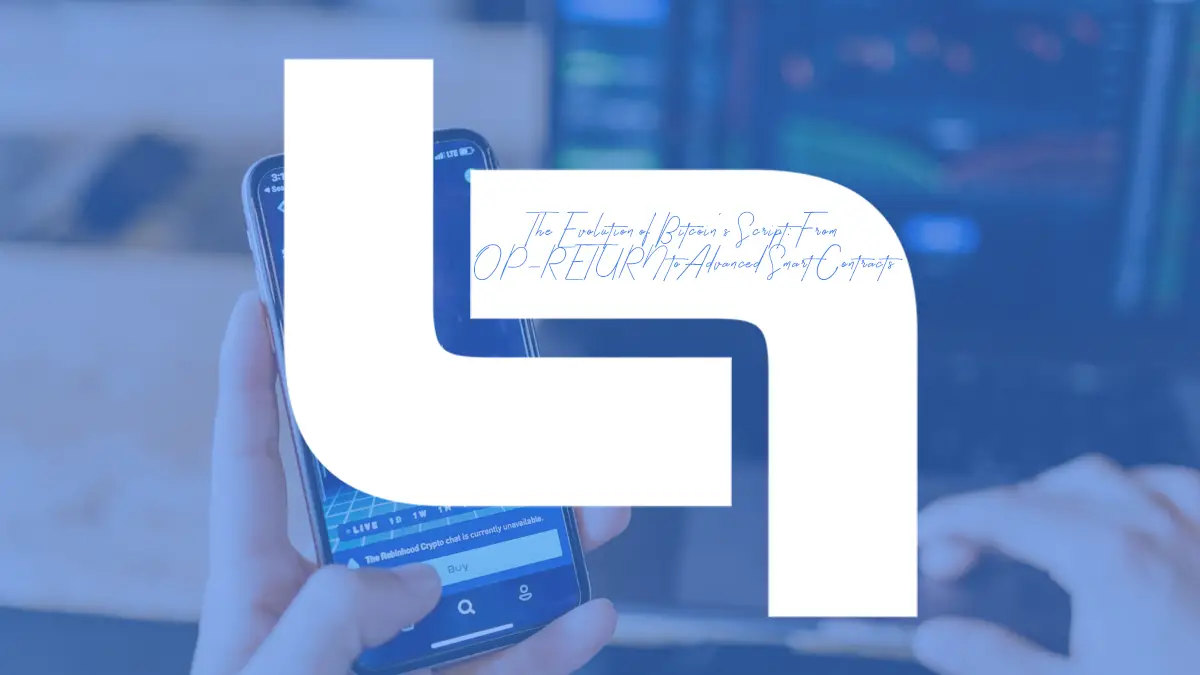When the world was introduced to Bitcoin in 2009 by its enigmatic creator, Satoshi Nakamoto, it was touted as a revolutionary decentralized peer-to-peer electronic cash system. This innovation was designed to eliminate the need for intermediaries like banks, offering an immutable, transparent, and decentralized method of transacting. However, Bitcoin’s brilliance doesn’t stop at being a mere digital currency. The advancements in Bitcoin’s script functionality echo innovations across the field, as seen in platforms like Immediate Definity Ai, which brings a new level of sophistication to online trading strategies.
Embedded within its architecture is a unique scripting system that provides the framework for more than just straightforward transfers of value. This scripting language allows for the creation and enforcement of certain conditions upon which coins can be spent. In essence, every transaction on the Bitcoin network is a small program being executed, determining who can spend the coins and under what conditions. This fundamental aspect not only reinforced Bitcoin’s robust security model but also paved the way for a myriad of innovative use cases beyond its original vision. As we journey through the evolution of Bitcoin’s script, it becomes clear that the potential of this groundbreaking technology extends far beyond simple transactions, laying the groundwork for the sophisticated programmable money of the future.

Basics of Bitcoin Script Language
Bitcoin transactions are not mere transfers of value. Instead, they execute scripts. The Bitcoin scripting language is stack-based, meaning commands are executed in a last-in-first-out manner. Core operations in Bitcoin scripting include, but are not limited to, checking cryptographic signatures to validate the authenticity of a transaction.
The Role and Controversy of OP_RETURN
The OP_RETURN operation is essentially a mechanism allowing users to embed a small amount of arbitrary data within the blockchain. Initially, its use sparked debate. While some saw it as a way to expand Bitcoin’s functionality beyond simple transactions, others believed it would unnecessarily bloat the blockchain. Over time, OP_RETURN’s role evolved, allowing for more varied data anchoring on the Bitcoin blockchain.
Pushing Boundaries: First Steps Towards Bitcoin Smart Contracts
Even with its limited scripting capabilities, innovators began exploring ways to execute more complex logic on Bitcoin’s blockchain. Early implementations included ‘colored coins,’ where specific Bitcoin units represented assets like stocks or gold. However, these endeavors often faced challenges, particularly since Bitcoin was designed with a deliberately limited scripting language to prioritize security.
RSK: Merging Bitcoin and Ethereum’s Capabilities
One ambitious project aiming to bridge the gap between Bitcoin and more advanced smart contract platforms is RSK (Rootstock). RSK’s vision is a noble one: introduce Ethereum-compatible smart contracts to Bitcoin. Through merge-mining and a two-way peg system, RSK seeks to tether its security to the more established Bitcoin network. This integration enables developers to build and deploy sophisticated decentralized applications using the robust security of Bitcoin.
Taproot and Schnorr Signatures: Setting the Stage for Advanced Scripting
In the ever-evolving space of Bitcoin, two significant advancements stand out: Taproot and Schnorr signatures. These upgrades are not mere improvements but transformative shifts. Taproot enhances Bitcoin’s scripting capabilities, allowing for more complex conditions for transactions. Simultaneously, Schnorr signatures bring forth both efficiency and privacy improvements, streamlining multi-signature transactions into a single signature format. These advancements are crucial as they pave the way for Bitcoin to host more intricate smart contracts without sacrificing its foundational security principles.
Future Potential: Bitcoin Smart Contracts and Beyond
As Bitcoin’s scripting capabilities expand, so too does its potential role in decentralized finance (DeFi) and applications. However, while other blockchains like Ethereum have taken the lead in the smart contract arena, Bitcoin’s approach is more conservative, emphasizing security and stability. Still, with innovations like RSK and the Taproot upgrade, Bitcoin may soon be positioned as a robust platform for a new generation of decentralized applications and contracts.

Conclusion: The Ever-Evolving World of Bitcoin Scripting
Bitcoin’s journey from its inception to the current day is a testament to its adaptability, resilience, and the innovative spirit of its community. What started as a decentralized alternative to traditional currencies has evolved into a multifaceted ecosystem, pushing boundaries and redefining our understanding of programmable money. With advancements like RSK and the Taproot upgrade, Bitcoin is subtly asserting itself in the domain of smart contracts and decentralized applications. These transformations not only expand its utility but also reiterate its potential to be more than just a store of value. As the world of decentralized finance grows, Bitcoin’s role is expanding, offering promise not just as digital gold but also as a platform for innovation. This continuous evolution and ability to balance between groundbreaking innovations and rock-solid security mark Bitcoin as a pivotal force in the financial landscape of the future.

